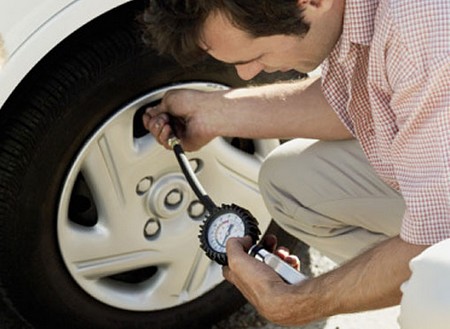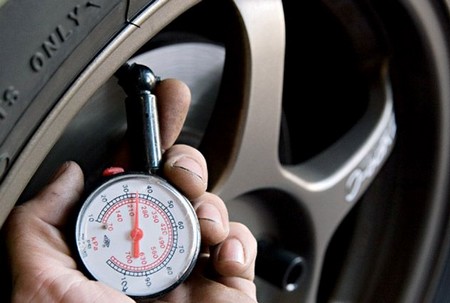Tires must be properly inflated to the correct tire pressure. If tires are under inflated, you risk damaging the side walls which are made out of steel ply and other rubber compound. Once damaged, side wall does not provide the necessary support for the vehicle weight which leads to flat tires or in worst case scenario, bursting while traveling at high speed.

If it is over inflated, you will have very little contact surface to the ground which results in lower stability and grip when in wet road condition and during hard cornering. Besides that, you will experience bumpy ride where every small surface potholes can be felt which still not the worst as compared to experiencing blow out during heavy load and at high speed. To prevent these from becoming reality, below are tips on how to check your tire pressure.
Refer to your car manual for recommended tire pressure and not on your tire wall. The reading stated on your tire walls is the maximum allowable reading. Do not pump to maximum pressure. Tires on 14” and 15” rims normally require 30Psi.
It is highly recommended to check your tire pressure at all time, and not only when your tires are leaking. This is especially important at countries whose temperature vary greatly. High temperature increases the pressure which lower temperature decreases the pressure. So check regularly to obtain the optimum pressure at all times
Use a well calibrated tire gauge to check the tire pressure. Use preferably analog or digital type compared to the conventional pencil type gauge which are notoriously inaccurate.
Unscrew the bleeder valve and place the inlet of tire gauge until a stable reading is obtained. Repeat the same procedure for all four tires. Do this only when the tires are cool. It is best to take the reading in the morning before you take it for a ride. The reading should be similar to car manual recommendation. Besides that, all four tires must have the same reading to ensure proper thread wear. Upon completion, replace all bleeder valve caps.
This simple DIY checking tire pressure saves on replacement of new tires and most importantly ensures safe journey.









